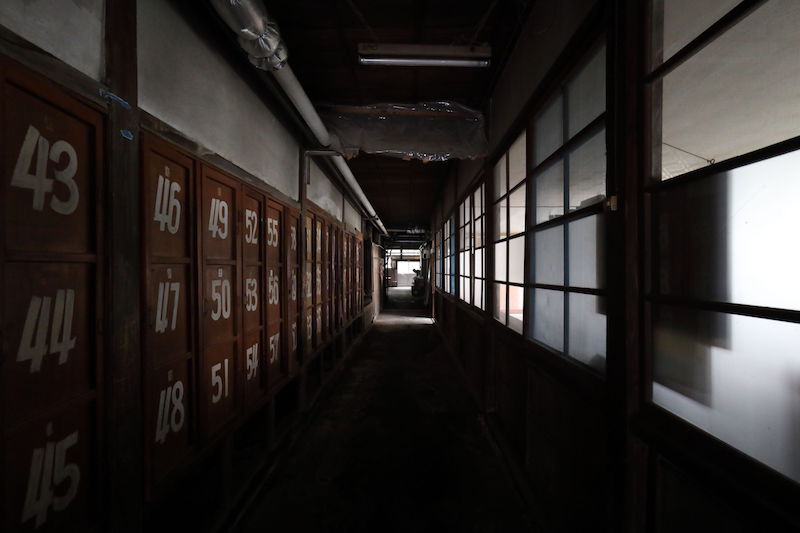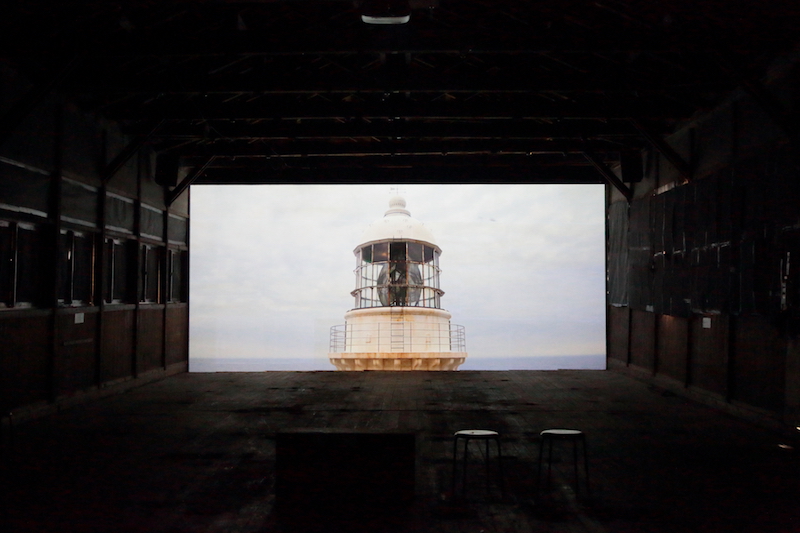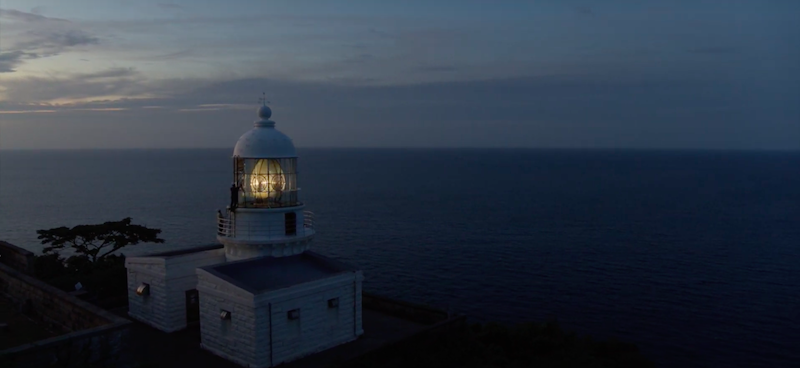video installation
The project about attaching a giant stenciled eyeball to the lighthouse’s lens to make the lighthouse look like a cyclops. Exhibited at the “Dai-Kyoto” at Kyotango Kyogamisaki Lighthouse in Kyoto City.
note
・Kyotango city is located in the northernmost part of Kyoto Prefecture. Since the Meiji era (1868-1912), “Tango Chirimen” has flourished in the textile industry, but around 1990s many of its factories were closed down.
・The city is currently home to a joint US military and Japanese Self-Defense Force base where an “X-band radar” has been installed to detect flying objects from North Korea. A sense of military tension hangs over the idyllic landscape.
・The lighthouse only serves today as a landmark for ships to check their route, but in the past it had a military significance. It was a lookout and a radar base, where the Coast Guard personnel were always present at all times.It is also the setting for the film series “Times of Joy and Sorrow,” which depicts the life of a lighthouse keeper since the end of World War II.
・In EHS’s video, the lighthouse is transformed into a “giant cyclops” to express such pre-war military tension. Cyclops is the god of evil in Greek mythology. In particular, it is referred to the cyclops painted by the French artist “Odilon Redon”.
・There are only three “first class Fresnel lenses” in Japan used for the lens of Kyogamisaki Lighthouse. The lens and mercury-type lens turntable were purchased at Expositions universelles de Paris in the late 19th century.
・Redon describes the balloon he saw at Expositions universelles de Paris as a monocular monster. This painting is based on the subject of “balloons floating in the sky” as the human unconscious emerges into consciousness due to technological advances. Our work is also about the lighthouse in an idyllic landscape, bringing to light the military tension that is unconscious in the landscape.
・Cyclops is depicted not as a fierce giant, but as a shy being, hiding in a mountain valley while watching over his beloved Galatia.
・During World War II, there was an air force base in Kyotango, and the national road that runs through the city today overlaps the ruins of the air force base’s runway. There is also a former hangar in the middle of the rice fields along the national road, which was used as Tango Chirimen Textile factory after the war.
・This work was produced under the permission of the Japan Coast Guard. This kind of project, which would normally be difficult, is possible thanks to the Coast Guard officers who once lobbied for the lighthouse to be used as a tourist attraction.
・The video documents were exhibited at the former site of Yoshimura Machinery, the largest Tango Chirimen Textile Factory in Kyotango.



The installation is divided into two rooms. In the entrance room, a mountain-shaped sculpture made of clay, and a mural of animals were painted. These are motifs of things that appear on the road at night on the way to the lighthouse: a unique round mountain illuminated by the light of the lighthouse, and various animals staring at us from the roadside. The mountain-shaped sculpture had several holes in it, and the audience could peek through the holes to see the pictures of the animals.

